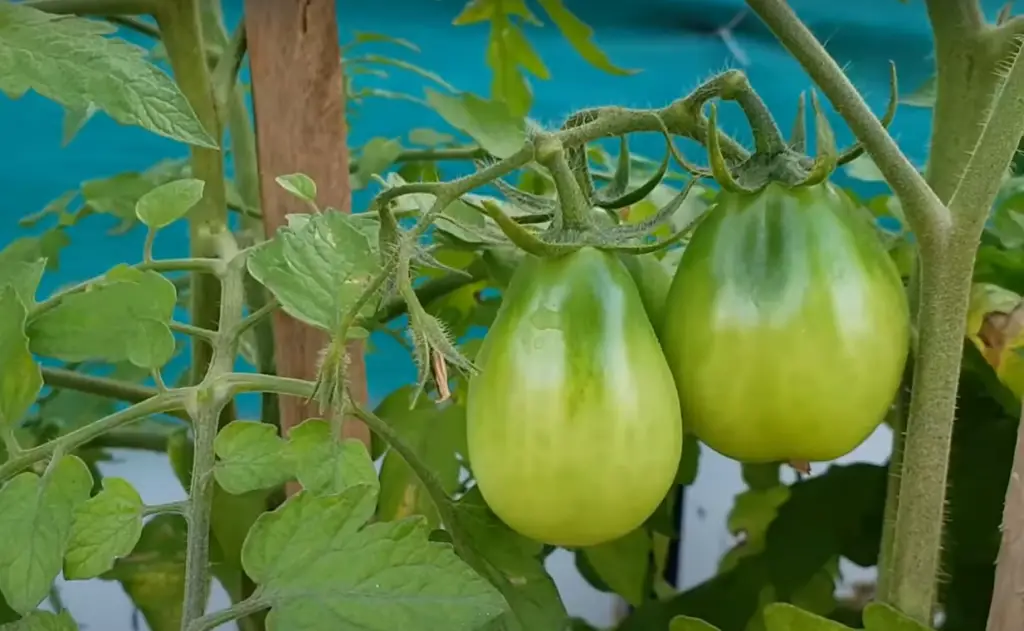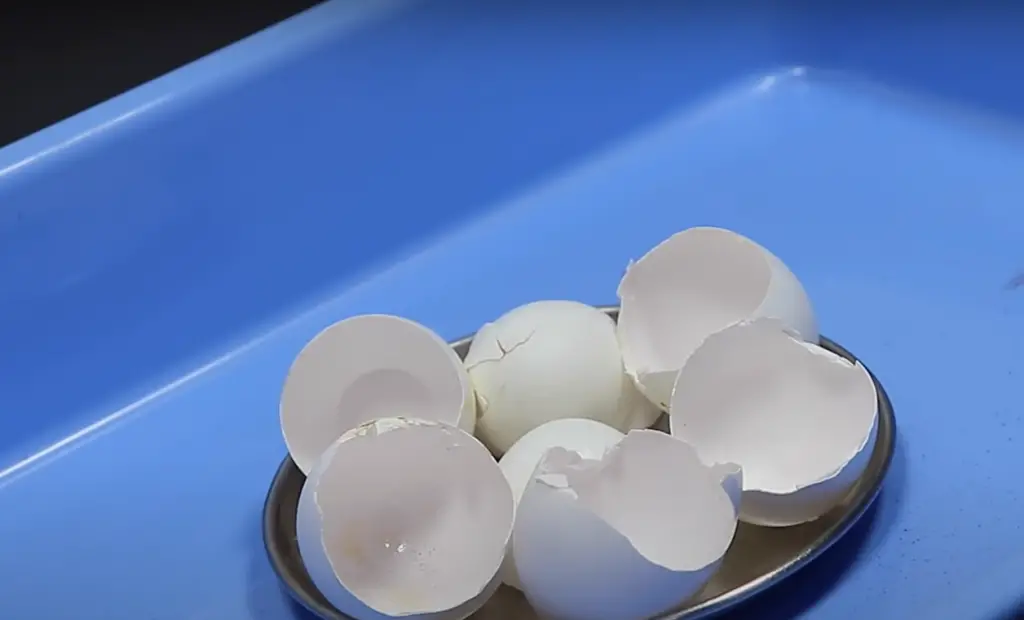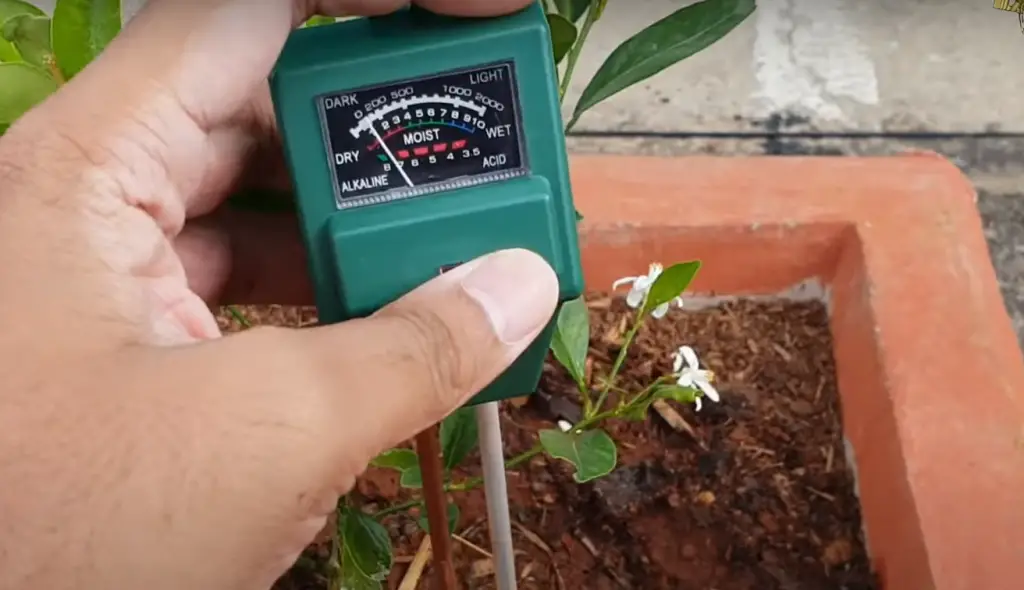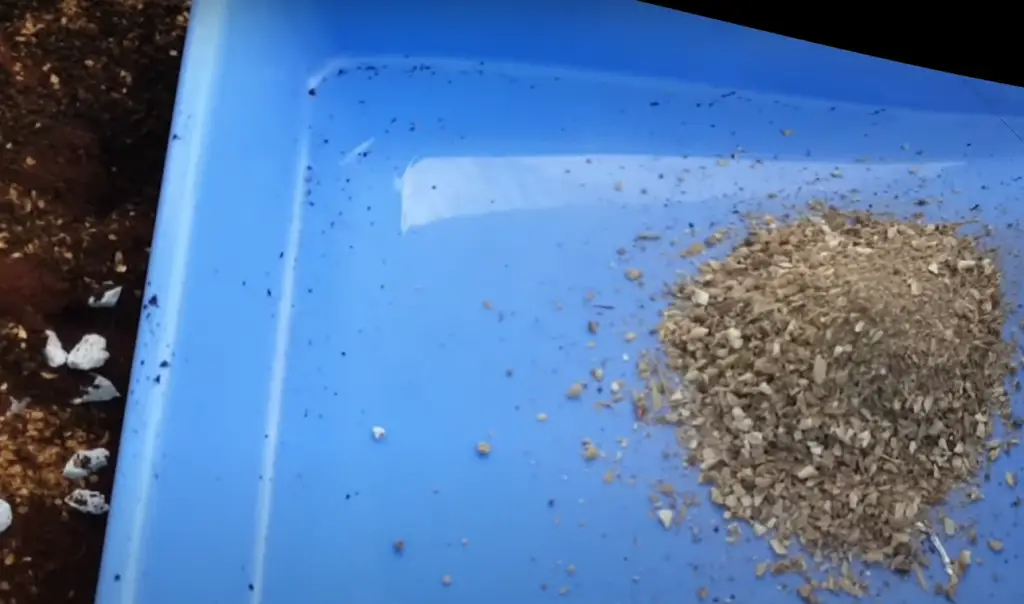Adding calcium to your garden soil is an important step in providing the best possible growing environment for your plants. Calcium serves as a buffer, preventing fluctuations in soil pH that could be dangerous to crops. It also provides essential nutrition for plant root systems and helps with nutrient uptake and cell wall strengthening. Unfortunately, adding calcium to garden soil can be tricky – too much or too little can spell disaster! That’s why it’s important to know how much you need and what methods are available for quickly adding this critical element to your soil without damaging its delicate balance of nutrients. In this blog post we will explore different strategies on how to add calcium effectively to garden soil in order achieve optimal growth results from your crop yield.
How Calcium Affects Plants and Soil
If your soil tests low in calcium, it will be unable to support healthy plant growth. Calcium is essential for cell wall development and structure, as well as providing essential nutrition for plant root systems.

A soil lacking in calcium can lead to stunted growth, poor yields, and even death of your plants. [1]
The Benefits of Calcium in The Soil
Calcium is an essential nutrient for plant health, as it plays a key role in various physiological processes such as cell division and cell elongation. In addition to supporting plant growth and development, calcium also contributes to the overall health and resilience of the soil. One of the main benefits of calcium in the soil is its ability to improve soil structure, by stabilizing soil particles and promoting better soil drainage. This, in turn, helps to enhance water availability for plant roots and leads to increased nutrient uptake. Furthermore, calcium can help to neutralize soil acidity, which is important for maintaining optimal pH levels and preventing nutrient deficiencies in plants. [2] Overall, the benefits of calcium in the soil are far-reaching and highlight the crucial role that this nutrient plays in supporting healthy plants and ecosystems.
Signs of Calcium Deficiency
Calcium deficiency in soil and plants is a serious concern for farmers and gardeners alike. Though often overlooked, this nutrient plays a crucial role in the overall health and productivity of our crops. There are several tell-tale signs of calcium deficiency in plants and soil.
Plants
Problems with calcium in plants can lead to stunted growth, yellowed leaves, leaf curling or cupping, and an inability to grow strong fruit or flowers. [3] This can be triggered by a range of conditions, including overwatering, temperatures that are too extreme, nutrient insufficiencies or the pH balance is off. When dealing with calcium deficiency in your plants it’s important to be aware of why these problems appear since each situation may need a different corrective action. Overwatering for example would require you to reduce the amount of water given – whereas adjustments to the soil’s nutrients may have little effect on this condition.
Soil
In terms of soil, calcium deficiency can be spotted through a number of symptoms.

These include an excess of water in the soil, nutrient deficiencies such as magnesium or phosphorus, poor root development and poor crop yields. To determine if your soil is lacking calcium, consider testing the pH levels as well as the available nutrients in the soil. Knowing this information will help you to create a tailored plan for adding calcium back into your garden.
Plants That Respond the Most to Calcium
Certain types of plants are particularly sensitive to calcium deficiencies and will benefit the most from adding this nutrient to their soil. These include tomatoes, peppers, melons, and other solanaceous vegetables.
Other crops that respond positively to added calcium include carrots, potatoes, onions, lettuce, cabbage and spinach.When to Add Calcium to Soil?
Calcium should be added to soil at the start of a growing season, when plants are just beginning to take root. This helps provide them with essential nutrients from the start of their lifecycle and encourages optimal growth and yields. It is also important to add calcium during peak growth periods (such as fruiting) in order to ensure that plants have an adequate supply of this nutrient throughout their lifecycle.
How Do You Fix Calcium Deficiency In The Soil
- Improve Soil pH: The most important step in correcting a calcium deficiency is to adjust the soil pH to an optimal range for plant growth, typically between 6.0 and 7.0. Depending on your soil’s current pH level, you may need to add lime or sulfur in order to bring it into balance.
- Add Calcium-Rich Amendments: Adding organic amendments like bone meal, wood ashes, or compost can help boost your soil’s calcium content naturally over time.
- Use Gypsum: Gypsum can be added to soils with a very low-calcium content (below 1%). This will help replenish the calcium quickly and effectively without needing to adjust the pH.
- Avoid Over-Fertilizing: Fertilizers are not a good source of calcium—and, in fact, using too much can interfere with your plant’s ability to absorb it. Be sure to use fertilizers only as directed and follow up with regular soil tests to ensure you’re not over-fertilizing.
- Utilize Cover Crops: Planting cover crops like clover or grasses can help add organic material to the soil, which will eventually break down and release calcium into the soil slowly over time.
- Apply Calcium Directly To Plants: You can also apply calcium directly to plants by spraying them with calcium-rich solutions like chelated calcium and calcium nitrate. This works best when combined with other soil amendments and should not be used as the sole source of calcium in your garden.
- Incorporate Eggshells Into The Soil: Eggshells are an excellent source of calcium carbonate, which can help raise the pH level of acidic soils. To use them, simply grind them up into a powder and mix them into the soil around your plants.
- Mulch With Compost: Covering the soil around your plants with a layer of compost can also help add nutrients and beneficial microbes to the soil, which will increase its ability to absorb more calcium from the environment.
- Avoid Over-Watering: Plants that are overwatered can become stressed, which can weaken their ability to absorb calcium from the soil. Make sure you’re providing only enough water for your plants and no more.
- Plant Calcium-Rich Plants: Many vegetables contain high levels of calcium, so try planting some in your garden such as broccoli, kale, spinach, and collards. These plants will help boost the overall calcium content of your soil over time as they decompose back into the earth via compost or mulch.
How to Add Calcium to Soil Quickly?
There are a few methods for quickly adding calcium to your garden soil.
Calcium Fertilizers
One of the easiest and most efficient ways to add calcium is through the use of a specialty fertilizer. Calcium fertilizers are available in both liquid and granular forms, making it easy to apply them directly to your soil.

When using calcium fertilizer, be sure to follow any instructions on the packaging carefully. Additionally, it is important to remember that fertilizer should not be applied to dry a soil, as this can result in poor absorption and inefficient uptake.
Foliar Spray
Foliar spraying is a process in which calcium is applied directly to the leaves of your plants. This method can be especially beneficial for crops that are short on time and need to absorb their nutrients quickly. Foliar sprays should be applied sparingly, as adding too much at once can cause burning or disease.
Lime
Lime treatments are one of the most popular methods for quickly adding calcium to soil. This method involves spreading a layer of ground limestone, or lime, over your garden beds and then gently mixing it into the soil. Lime helps to neutralize acidity in the soil, making it easier for plants to absorb nutrients. [4] Additionally, it provides an immediate source of calcium that can help strengthen plant roots and enhance growth. When applying lime to your soil, be sure to use the correct amount as too much can cause issues with nutrient uptake.
Dolomite Lime
Dolomite lime is a type of limestone that contains both calcium and magnesium. These two minerals are essential for healthy plant growth, so adding dolomite to your garden beds can provide an immediate boost in nutrient availability. This method is most effective when used in clay soils, as it helps to break up the soil particles and improve drainage. Additionally, it is important to note that while dolomite can provide an immediate source of calcium, it does not last long in the soil and may have to be reapplied over time.
Gypsum
Gypsum is another option for adding calcium to soil quickly. This mineral helps to break up heavy clay soils, allowing them to better absorb water and other nutrients. [5] Additionally, gypsum helps reduce toxic levels of sodium in the soil, making it more hospitable for plant growth. When applying gypsum, be sure to do so in early spring or late fall when temperatures are cooler and plants are not actively growing.
Ground Oyster Shells
Ground oyster shells are another quick and easy way to add calcium to soil. The shells contain a variety of trace minerals, including calcium carbonate, which can help nourish your plants with an immediate boost in nutrients. Additionally, ground oyster shells can help improve drainage by reducing compaction, allowing air and water to more easily move through the soil.

Oyster shell mulch should be applied in small amounts over the surface of your garden beds or mixed into existing soil before planting.
Wood Ashes
Wood ashes are a great source of calcium for soil, and can be used to quickly raise the nutrient levels. This material is especially helpful for acidic soils, as it helps neutralize the pH levels and make them more hospitable for plant growth. When adding wood ashes to your soil, it’s important to be aware of the ratio – as adding too much can lead to an increase in soil salinity, which can be damaging to plants.
Soft Rock or Colloidal Phosphate
Soft rock or colloidal phosphate is another effective way to add calcium to soil. This material also provides other beneficial nutrients, such as phosphorus and potassium, which are essential for plant health. When using this method it’s important to be aware of the ratio being applied – too much can result in an increase in soil salinity, which can be damaging to plants.
Bone Meal
Bone meal is another natural way to add calcium to your garden soil. Bone meal helps increase the levels of available phosphorus and nitrogen in the soil, which are both important for healthy plant growth. When using bone meal, it’s important to mix it into the topsoil thoroughly and rake it in well before planting or sowing seeds.
Egg Shells
Egg shells are a great source of calcium, and can be used to quickly raise the nutrient levels in soil. Egg shells provide other beneficial nutrients, such as magnesium and potassium, which are essential for plant health. [6] When adding eggshells to your soil, it’s important to grind them into a fine powder before mixing them into the topsoil. Egg shells should be mixed in well and raked in before planting or sowing seeds.
How to add calcium to soil without raising pH
When it comes to adding calcium to soil while avoiding the side-effects of raising the pH, there are a few techniques that can be employed. The most common method is using gypsum, which is a natural mineral that contains calcium and sulfur. This mineral can easily be used to supplement calcium in soil without altering the pH. Another technique is utilizing calcium nitrate, which is a soluble and fast-acting fertilizer that provides both calcium and nitrogen to the soil. Additionally, one can use agricultural limestone in small quantities to supply the calcium required while barely affecting the soil pH. Understanding the science behind these methods and implementing them correctly can make the process of adding calcium much easier and efficient.
How to Make Homemade Calcium for Plants?
There are several ways to make homemade calcium for plants. Here are some of the most popular methods:
Vinegar and Eggshells
To make homemade calcium using vinegar and eggshells, start by boiling two eggs for 10 minutes. Then remove the eggs from the boiling water, allow to cool, and then peel off the shells. Once you’ve peeled off all of the shells from both eggs, place them in a blender or food processor along with ¼ cup of white vinegar. Blend until you have a fine powdery mixture. You can then sprinkle this onto your soil for an easy and natural way to add calcium to your plants’ diet.
Banana Peels
Banana peels are another great source of calcium for plants. [7] To make homemade calcium using banana peels, start by cutting up four or five ripe banana peels into small pieces.

Place the pieces in a blender along with one cup of water and blend until you have a thick liquid mixture. You can then strain this mixture to remove any chunks of peel, and use the remaining liquid as a fertilizer for your plants.
Lemon Juice
Lemon juice is also a great source of calcium for plants. To make a homemade calcium fertilizer using lemon juice, start by mixing ¼ cup of lemon juice with one gallon of water. Once you’ve mixed the two together, you can then use this mixture to water your plants and give them an extra boost of nutrition.
FAQ
What is the Best Source of Calcium for Garden Soil?
The best source of calcium for garden soil is lime, as it helps to raise the pH levels and makes it easier for plants to absorb available calcium in the soil. Dolomite lime is also a great option, as it provides additional magnesium which helps promote photosynthesis and plant growth. Other sources of calcium include wood ash, egg shells, vinegar and eggshells, soft rock or colloidal phosphate, and ground oyster shells.
Does Powdered Milk Add Calcium to Soil?
Yes, powdered milk can be used to add calcium to soil. Powdered milk is rich in calcium and helps to improve the structure of garden soil, making it more hospitable for plant growth. It also helps to increase levels of available nitrogen and phosphorus in the soil, which are both essential nutrients for healthy plants.
Do coffee grounds add calcium to soil?
Yes, coffee grounds can be used to add calcium to soil. Coffee grounds are a great source of nitrogen and other essential nutrients, and they help improve the structure of garden soil. Additionally, coffee grounds contain trace amounts of calcium which can help increase levels of available calcium in the soil.
Does Epsom Salt Add Calcium To The Soil?
No, Epsom salt does not add calcium to the soil. Epsom salt is composed of magnesium sulfate, which helps to provide plants with essential nutrients such as iron and sulfur. It also helps reduce toxic levels of sodium in soil, making it more hospitable for plant growth.
Is Compost High in Calcium?
Yes, compost is generally high in calcium. Compost helps to improve the structure of soil and increase its overall fertility, which makes it ideal for adding calcium to the garden. Additionally, compost can help reduce the levels of toxic metals such as lead and cadmium in the soil, making it safer for plant growth.
What Helps Plants Absorb Calcium?
The two most important factors that help plants absorb calcium are the availability of the mineral in the soil, and the pH levels. If the soil is too acidic or alkaline, it can be difficult for plants to absorb calcium.
Should We Use Expired Calcium Tablets For Plants?
While calcium tablets may contain the nutrients plants need to flourish, they are not typically recommended for use in soil or as a foliar spray. Expired calcium tablets can be unsafe and should not be used on plants as they may contain bacteria or fungi that could harm your plants. Additionally, expired calcium tablets may no longer contain the active ingredients necessary for plant growth and health.
Will Adding Chalk To The Soil Help Balance Calcium Deficiency?
Adding chalk to the soil can be an effective way to help balance calcium deficiency. The calcium in the chalk is available for plants to take up and use, however, it must be broken down by microbial activity before being utilized by the plant. Additionally, since chalk contains other minerals as well as calcium, it could also influence the pH of the soil and should be used with caution. It is best to test your soil’s pH levels prior to adding any amendments like chalk or lime.
Useful Video: How do you add calcium to soil quickly?
Conclusions
Adding calcium to your garden soil can help give your plants the perfect environment to grow and thrive. While it sounds complicated, with a little research and application of the right method for adding calcium you can give your crops just the boost they need. Remember that too much or too little of this essential nutrient will have an adverse effect on your soil and could spell disaster, so be sure to gauge exactly how much additional calcium is needed and know what are the best ways for quickly adding it. Furthermore, consider testing your soil pH ahead of time; this will give you more insight into what kind of changes need to be made in order to ensure healthy growth and success in your garden!
References:
- https://en.wikipedia.org/wiki/Calcium_deficiency_(plant_disorder)#:~:text=Calcium%20deficiency%20symptoms%20appear%20initially,terminal%20buds%20and%20root%20tips.
- https://www.canr.msu.edu/resources/facts_about_soil_acidity_and_lime_e1566#:~:text=According%20to%20chemical%20definition%2C%20lime,and%20raising%20the%20soil%20pH.
- https://blog.bluelab.com/calcium-nutrient-deficiency-in-plants
- https://limeplanet.co.uk/benefits-of-adding-lime-to-soil-improve-soil-health-and-more/
- https://www.thespruce.com/how-to-use-gypsum-in-gardening-5079656
- https://www.masterclass.com/articles/egg-shell-fertilizer-guide
- https://www.brisbane.qld.gov.au/clean-and-green/green-home-and-community/clean-and-green-blog/four-ways-banana-peels-can-help-your-plants#:~:text=Banana%20peels%20contain%3A,strong%20roots%20and%20repel%20pests










Leave a Reply
View Comments